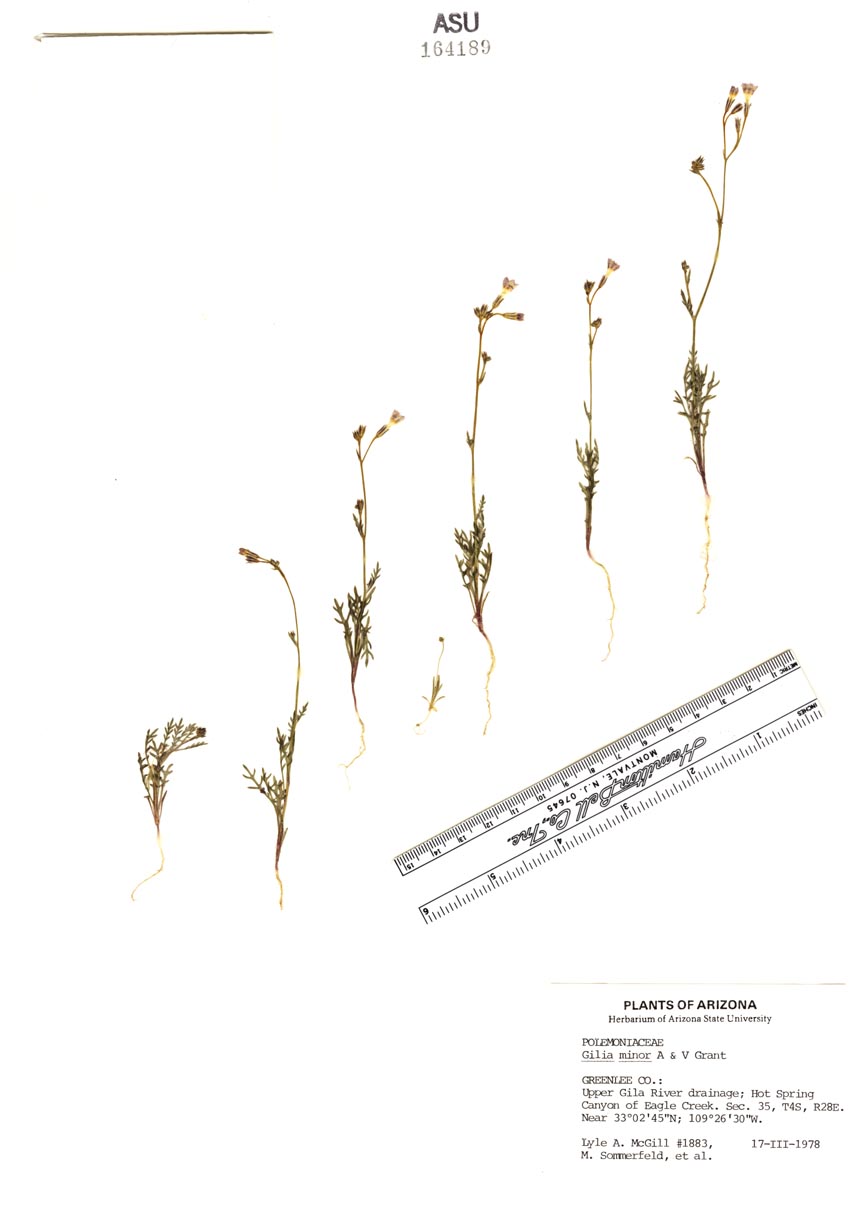Gilia
|
Family: Polemoniaceae |
PLANT: Annual; simple to branched, leafy to scapose, glabrous, pubescent to glandular, the hairs sometimes loosely tangled like cobwebs. LEAVES: basal to alternate, entire to deeply pinnately lobed, the lobes completely confluent with the rachis, flat to terete. INFLORESCENCE: terminal, paniculate, open to congested, the basic unit composed of 2-7 pedicelled flowers subtended by a single bract, rarely solitary. FLOWERS: actinomorphic; calyx tube membranes usually ruptured in fruit, rarely remaining intact; corolla funnelform to salverform, the tube, throat, and lobes often with different hues; stamens equally to subequally inserted on the corolla tube or throat; filaments equal or unequal in length; anthers included to exserted; style included to exserted. CAPSULE: ovoid to spheroid; seeds 2-many per locule. NOTES: ca 40 spp.; w N.Amer, s S. Amer. (Felipe Luis Gil, Spanish botanist). REFERENCES: Dieter H. Wilken and J. Mark Porter, 2005, Vascular Plants of Arizona: Polemoniaceae. CANOTIA 1: 1-37. Cal tubular to campanulate, with prominent scarious or hyaline intervals between the more herbaceous ribs, commonly ruptured by the fr; cor funnelform or salverform to tubular; filaments generally equal and equally inserted; seeds 1-many per locule, sometimes becoming mucilaginous when wet; taprooted herbs with alternate (or all basal, or the lower opposite), entire to pinnatifid or ternate lvs, but without definite lfls; infl basically cymose. 60, New World, mainly w. U.S. Gleason, Henry A. & Cronquist, Arthur J. 1991. Manual of vascular plants of northeastern United States and adjacent Canada. lxxv + 910 pp. ©The New York Botanical Garden. All rights reserved. Used by permission. |

